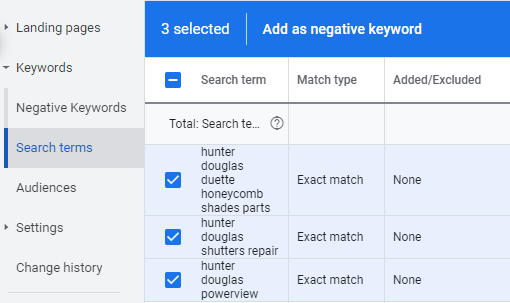
Pasta Primavera is a dish that consists of vegetables, pasta, and sometimes meat. I made it with shrimp one time and it was delicious—added some broccoli, carrots, and sweet red pepper and paired it with a nice Pinot Grigio.
On a (seemingly obviously) unrelated note, Primavera Systems is a brand name of enterprise project portfolio management software. Acquired by Oracle Corporation in 2008, it includes project management, collaboration, and control capabilities and integrates with other enterprise software.
Why would I mention these two very different things in the same article? Because if you’re running a Google Ads campaign concerned with Primavera Software and you aren’t careful, you may find your campaign being matched with people looking for the best Pasta Primavera recipe. Google is normally pretty good with these things, but some strange matches can happen when merchants aren’t careful.
How Keywords Work in Ad Campaigns
Keywords are a little tricky when it comes to shopping feeds. This is mostly because they don’t function in the same way as they do with text ads, which most merchants are more familiar with.
For a traditional text ad, building out a keyword list is a process of listing out search terms that we want to trigger our ad. Google will then use that list and show our ad when a user searches for that specific term—or one that’s deemed to be close enough to what we bid on. For example, if my site sells running shoes, I would bid on phrases like “running shoes,” “tennis shoes,” “nike,” and similar words and phrases. Google will then show my ad when someone searches for those terms I bid on, but may also show my ad when someone searches for “athletic shoes,” a phrase I did not specially bid on, but is pretty close to others that I did. I can also build out my keyword list to include anything I want, which gives a lot of flexibility to how a campaign is built and how my ads are focused.
For a shopping campaign, however, the process is a bit different. A merchant submits a data file to Google, and then Google crawls individual product pages and indexes information like product names and descriptions, using that information as a keyword list. Instead of adding keywords to tell Google what type of search terms you’d like to have your ad show for, you can make a list of what are called “negative keywords” for your campaign, which works in the inverse by telling Google specific terms with which your products should not be matched.
If Google Ads campaigns are like sculpture, think of text-based PPC ads as clay and shopping feeds as marble. The main difference is with clay we can add pieces together, whereas with marble the sculptor takes his chisel and starts chipping away.
Adding Negative Keywords to Your Shopping Campaigns
Optimizing product titles and descriptions has been a well-known tactic to increase conversions for quite some time now, but that is just one part of shopping feeds campaign optimization. Merchants should also be checking their search terms and adding negative keywords on a regular basis.
To see the search terms that have been paired to your site, look in the Keywords section in the Google Ads left navigation and select "Search terms" from the dropdown menu. Search terms can be sorted by a number of metrics, but the most important ones to look at are Impressions, Clicks, Click Through Rate (CTR), Cost, Conversions, and Cost/Converted Click. Keep your profit margins in mind when looking at your data. If a particular search term is bringing in a fair number of conversions, look at the cost per converted click field—are you actually losing money from those conversions?
When you have identified an undesirable search term, be sure to add it to your negative keyword list. Check the box next to the search term, and an option will appear to add it as a negative keyword. If you make a mistake, don’t worry—you can add and remove from this list at any time.

Final Thoughts
Because of the way Google indexes product information, it can be tempting to "set it and forget it," confident that your high-quality product titles descriptions will see the campaign through. However, a well-cultivated negative keywords list plays just as big a role in helping Google match products to relevant search terms. When the two work together, your campaign is in a much better position to succeed.











